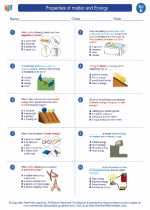Radiative Zone
The radiative zone is the section of the sun’s interior that lies between the innermost core and the outer convective zone. This region is primarily responsible for the transfer of energy from the core to the outer layers of the sun. The radiative zone is characterized by the mode of heat transfer known as radiative diffusion, where energy is transported by photons as they are absorbed and re-emitted by the particles in the zone.
Structure and Characteristics of the Radiative Zone
The radiative zone extends from the core of the sun to about 70% of the solar radius. It is composed of highly compressed plasma, where the temperature ranges from about 2 million to 7 million degrees Celsius. Photons generated in the core travel through the radiative zone, bouncing off charged particles and being absorbed and re-emitted in a random walk pattern until they reach the convective zone.
Energy Transfer in the Radiative Zone
The energy generated in the sun's core is in the form of gamma rays, which have very short wavelengths. As these high-energy photons traverse the radiative zone, they interact with the particles in the plasma, transferring their energy to them. This process of absorption and re-emission can take thousands to millions of years to complete, due to the dense nature of the plasma in this region.
Importance of the Radiative Zone
The radiative zone plays a crucial role in the overall energy balance of the sun. It acts as the middleman, transferring the energy generated in the core to the outer layers of the sun, where it is eventually radiated into space. Understanding the processes that occur in the radiative zone is essential for comprehending the workings of stars and the fundamental principles of astrophysics.
Study Guide for the Radiative Zone
- Understand the concept of radiative diffusion and how it differs from convective heat transfer.
- Comprehend the structure and composition of the radiative zone, including its temperature and density profiles.
- Learn about the properties of photons and how they interact with the plasma in the radiative zone.
- Explore the significance of the radiative zone in the context of the sun's energy production and its impact on the solar system.
By mastering these concepts, you will gain a deeper understanding of the role played by the radiative zone in the sun's internal dynamics and its broader implications for the field of astrophysics.
◂Science Worksheets and Study Guides Fifth Grade. Properties of matter and Energy

 Worksheet/Answer key
Worksheet/Answer key
 Worksheet/Answer key
Worksheet/Answer key
 Worksheet/Answer key
Worksheet/Answer key
 Vocabulary/Answer key
Vocabulary/Answer key
 Vocabulary/Answer key
Vocabulary/Answer key
